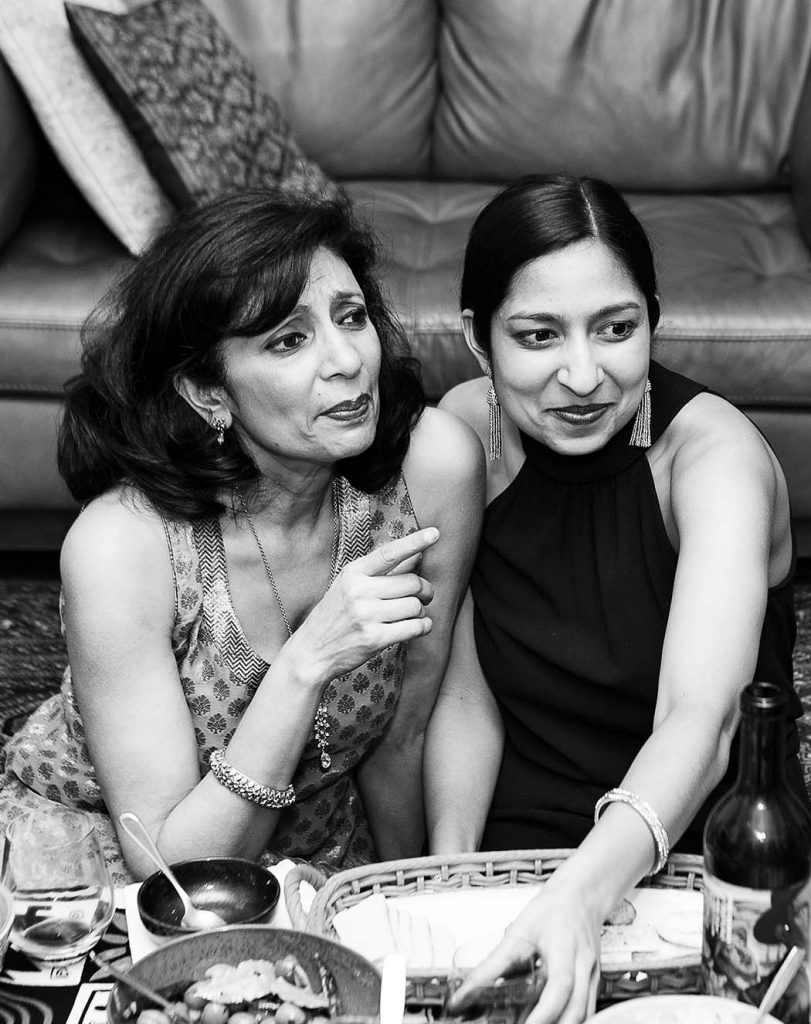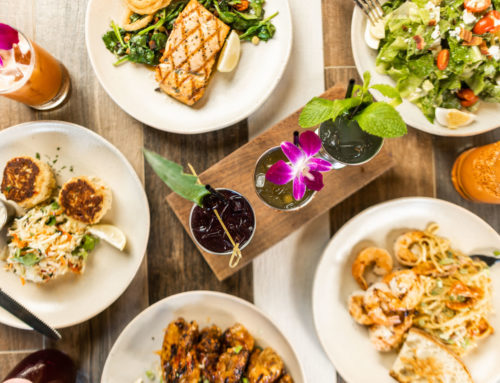
Photography by Mackenzie Kelly
Microwave a sweet potato with butter and brown sugar, top it with cinnamon cereal, and you have a riff on sweet potato pie. Or take grilled chicken, dress it in a makeshift peanut sauce, wrap it in lettuce leaves, and you’ve jazzed up your dining hall meal. Native Dallasite Priya Krishna discovered her knack for food writing by developing recipes from ordinary items she found in Dartmouth’s dining halls. Her college column “DDS Detective” turned into her first book “Ultimate Dining Hall Hacks.” Now, Krishna is a contributing writer for the New York Times, Bon Appétit, Texas Monthly and others. Her 2019 book “Indian-ish” is a collection of hybrid recipes, such as Roti Pizza, that illustrates her family’s experience as modern Indian-Americans.
How would you describe your childhood in Dallas?
I went to Greenhill. I felt incredibly lucky to be going there but was one of a few brown kids in a primarily white class. I was eating Indian food at home. I was very proud of my Indian heritage but felt alienated by my heritage in the context of where I went to school. But I was so lucky. I grew up with all of my mom’s siblings less than a 20-minute drive away.
How have your parents influenced you?
I co-wrote the book with my parents. They’re my family’s recipes, primarily my mom’s recipes. She’s such a talented, intuitive cook. I felt like her recipes could be a real gateway for people who have perhaps never cooked with Indian flavors. It was really a family production. My dad was helping me grocery shop. My uncles and aunts were hand models. My sister and my brother-in-law came into town to be production assistants on the photoshoot.
[quote align=”right” color=”#000000″]
“My Texas experience was largely defined by my mom’s home cooking.”
[/quote]
How often do you cook Indian food?
I’m traveling and eating out quite a bit for my job. Usually, when I’m home, it’s dal and rice on repeat.
What things in your kitchen could you not live without?
I have a garlic press from the 1980s. Most garlic presses I’ve encountered these days are really bad. But this garlic press, you put the clove in, peel and all. It extrudes the garlic and the juice and just gives you that really pungent, powerful garlic flavor.
What meal would you make for a group of friends?
Dal rice, sabzi and kachumber are my bread-and-butter staples. (Dal is a rice and lentil soup. Sabzi is a cooked vegetable dish. Kachumber is a salad of fresh chopped tomatoes, cucumbers, onions and lemon juice.)
How has your book influenced your work in the Bon Appétit Test Kitchen?
As a contributing writer at Bon Appétit, I noticed that there is a real dearth of Indian recipes by South Asian people. There’s no way to define the entire Indian-American experience, but I hope to use that platform to bring on more South Asians and other people of color who can make our collection of recipes feel a lot more robust and diverse.
Would you say Texas food influenced your work?
We didn’t actually go out to eat a ton when I was growing up. I love Tex-Mex and have written extensively about it. But my Texas experience was largely defined by my mom’s home cooking. Her cooking is Texas to me.
Do you miss anything about living in Texas?
I miss backyards so much. I quarantined with my parents for three months, and I had forgotten what it’s like to have a backyard and a pool.
From your time quarantining at home, what’s your favorite memory?
Every night, my mom would make a different cocktail, like a Negroni or a margarita. We would have happy hour in the backyard.
What things would you change in the food world?
I would hire more Black, indigenous and POC in positions of leadership at food magazines. I would change the tone of recipes and articles so they don’t always center food around white perspectives.
You’ve featured yogurt in your work. Why?
My dad makes yogurt homemade every week. This is true for a lot of Asian families. There’s something so much tastier and more delicious about making yogurt yourself. It’s tangier and has more character. I love the idea that yogurt sort of evolves over time.
Did you bring your yogurt culture from your parents in Dallas?
My mom hand-carried it from Dallas to New York.
How long does the yogurt culture last?
I’m not entirely sure. You’d have to ask a food scientist. We’ve had frozen yogurt culture in our fridge dating back to 2008. And we’ve been able to make it into yogurt still.
Do you eat your yogurt every day?
Most days, yes.
What advice would you tell yourself 10 years ago?
Your perseverance will pay off. You ought to be working as a food writer not just because it’s a great profession, but because you want to change the culture.
How would you say you’ve evolved in your career?
I’ve become a lot more thoughtful, especially when it comes to understanding the sheer diversity within individual cuisines. I’m much more interested in the urgency of labor, environmental and social issues, and I want to center that in my writing. But my fundamental mission hasn’t really changed.






